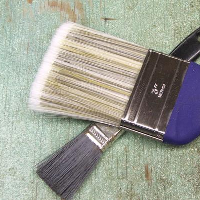
Is what you did today representative of how you want to live? Lifestyle design is the counterpart to focusing on achievement. Completing goals asks you what you want to accomplish. Lifestyle design asks you what experiences you want to have. How you want to live, instead of what you own.
I believe the best way to view lifestyle design is slow constructions, not enormous leaps. By making smaller, incremental changes to your current routine, you can thoroughly enjoy what you have while you work towards bigger things.
Building With What You’ve Got
Circumstances are never ideal. You might have responsibilities and commitments that can’t easily be avoided. You might be forced to live in an environment that doesn’t suit your tastes. You might currently lack the skills or experience to make a living off what you have.
If circumstances aren’t ideal, you need to work to change them. But the process of change can take months or years of hard work. Lifestyle design doesn’t require that every condition be perfect. It simply means building the best experience with the materials you have.
Lifestyle design also compliments goal-setting, as improving the experiences and routines in your life will make you more able to reach those big goals. Someone who is content, energized, productive, focused and can still have fun will usually accomplish more than the stressed-out workaholic.
The Building Blocks of Lifestyle Design
There are several big building blocks for lifestyle design. In each case there is no “right” or “wrong.” There are just different creations. Saying one set of habits, organizing systems or work is better is like saying paintings with the color blue are better. It’s all a matter of taste.
What really matters is what helps you move towards your goals and enjoy life the most. Here are the main ones you should consider:
1 – Habits
Your routines and habits make a large chunk of your time. I would estimate that anywhere from 70-90% of the time you spend each day is done on autopilot. You do it because it is what you did yesterday, not because there was a clear decision between two new alternatives.
Lifestyle design means sculpting your habits so you don’t struggle against them. Ask yourself what you would do if the following things were automatic for you:
- Exercising
- Working without procrastination
- Eating healthy
- Adopting calming/stress relief routines
- Staying organized
- Reducing time on television or pointless web-surfing
If you dedicate yourself to making one change over an entire month, you can slowly build the routine that reflects your life. I started doing this several years ago. My habits have reached a point where I only need to make minor tweaks and repairs. My habits already reflect the lifestyle I want.
If you want more ideas for taking control of your habits, check out my book.
2 – Social Circle
What kind of relationships, friends and connections do you want? Creating the social structure you want requires a whole different set of skills than changing habits. Not only do you need to meet a variety of people, but you need to work within the existing social structures created.
But you do have more control over your social life than just the people who happen to be near you. The last two years have been an active effort for myself to reach out and connect with interesting people. My ideal social life when designing my lifestyle has as much diversity as possible.
Try joining new organizations and groups or network through your existing friends to mold the social life you want.
3 – Work
Not just how much you want to get paid, but how you earn it. Again, the idea behind lifestyle design is that this doesn’t need to be a huge leap. Within a job you can slowly ask for more autonomy, responsibility or work that reflects your personality. Within a business you have even more flexibility as you change your business model to meet the demands of customers and reflect your strengths and interests.
However, don’t be afraid to scrap the entire design and start over if you aren’t fulfilled at your job. You can’t polish over fundamental design flaws. Lifestyle design has limitations and it can’t compensate for the need to get out of negative working environments.
4 – Experiences
What kind of experiences do you want to have regularly? Design your life so that more opportunities for new experiences flow in. Here are a few starting points to consider:
- Mobility. How able are you to travel and take vacation time? As blogging becomes an increasingly more reliable income source for myself, my mobility increases. Most jobs the opposite occurs where more success creates less freedom.
- Skills. Discipline creates opportunities. A piano player who disciplines herself to practice hard can play beautiful music. If you build the right core set of skills within yourself, you have a greater range of possibilities for experiences you want to have.
- Challenges and games. What kind of challenges and games do you want to take out of life? If you’ve designed your life successfully, the challenge you add should be a fun addition, not a forced requirement.

 I'm a Wall Street Journal bestselling author, podcast host, computer programmer and an avid reader. Since 2006, I've published weekly essays on this website to help people like you learn and think better. My work has been featured in The New York Times, BBC, TEDx, Pocket, Business Insider and more. I don't promise I have all the answers, just a place to start.
I'm a Wall Street Journal bestselling author, podcast host, computer programmer and an avid reader. Since 2006, I've published weekly essays on this website to help people like you learn and think better. My work has been featured in The New York Times, BBC, TEDx, Pocket, Business Insider and more. I don't promise I have all the answers, just a place to start.